On August 29, 2008, Michael Jackson celebrates his 50th birthday. To mark the occasion, Gigwise is taking a look back at the music legend's career. Click through to discover some facts and see great pictures of the King of Pop...

Michael Joseph Jackson was born in Gary, Indiana on August 29, 1958. He was the seventh child of nine children to Joseph and Katherine Jackson and was born into a typical working class family. The city of Gary is 25 miles from downtown Chicago and is famous for its massive steel industry. It took its name from the chairman of U.S. Steel, Elbert H Gary, and is nicknamed 'City of Century' – we're hoping for ironic reasons.

After making some revelations in his autobiography, in a 1993 interview with Oprah Winfrey Michael openly admitted that his father Joseph physically and mentally abused him as a child. He alleged that his father name-called, hit and whipped him – experiences which still haunt him. Michael recalled one moment when Joseph climbed through his bedroom window screaming and wearing a horror mask to teach his son not to leave his window open.

Michael showed a prodigious talent for music from a very early age, often singing in front of his classmates at school. In 1964, aged six, he joined the group his older brothers formed called The Jackson Brothers and performed backing vocals and congas. By 1966 the family collective had renamed themselves The Jackson 5 and Michael and Jermaine had assumed vocal duties. They toured the Midwest extensively, even playing in adult strip joints.

After winning a local talent show, The Jackson 5 signed to Steeltown Records in their native Gary in 1967. Michael was nine years old at the time. During their brief time with the imprint they released tracks such as the above 'Big Boy' and 'We Don't Have To Be Over 21 To Fall In Love'. The still impossibly young Michael was fast becoming the perfect showman and was promoted to frontman at around the time they signed for legendary label Motown Records in 1968.

As a PR stunt Motown Records decided to leak to the press the untruth that Diana Ross was the person who discovered The Jackson 5 (she was introduced to them). Ross formally introduced the family collective to the public at a Beverly Hills club called Daisy on August 11, 1969. Michael left the audience spellbound. Their first Motown release – and their only single from their album Diana Ross Presents The Jackson 5 - 'I Want You Back' reached number one in the US in January 1970.

Released over a period of less than a year, The Jackson 5's first four singles - 'I Want You Back', 'ABC', 'The Love You Save', 'I'll Be There' - all went to number one on the Billboard Chart, setting a new record in the process. Michael's soulful and emotive voice was undoubtedly the centrepiece of the songs. Motown Record execs allegedly lied that Michael was aged nine, two years younger than his real age of 11, to make him seem more endearing to the public.

As a showcase for his talent, Michael released four solo albums with the Motown imprint beginning with his debut 'Got To Be There' (which spawned the track of the same name) in 1972 and ending with 'Forever Michael' in 1975 when the star was 16. Released at a time when The Jackson 5 were still active, although the solo albums didn't achieve anywhere near the greatness or sales figures his later records did, they marked him out as a future star.

After The Jackson 5's sales started to wane, the band left Motown for CBS/Epic Records in 1975. Due to legal factors they were forced to rename themselves The Jacksons. The ever talented Michael was promoted to lead songwriter in the group, who released another six albums together in the eight year period of 1976 to 84. Hits during this period included 'Can You Feel It?' and 'This Place Hotel'.

Alongside Diana Ross, Michael Jackson starred as the scarecrow in the 1978 movie The Wiz. The musical is an adaptation of Frank L Baum's book The Wonderful Wizard of Oz and featured an entirely African American cast. Although it was a massive flop, both critically and commercially, the film role proved to be a very fruitful experience after he met the man who scored it, Quincy Jones. The two immediately bonded and Michael asked Jones to produce his upcoming fifth solo album.

'Off The Wall' was released through Epic Records on August 10, 1979. Markedly different from his previous four albums with Motown, it was a hyper-eclectic odyssey that incorporated disco, funk, pop, ballads, soul and even jazz into the meld. It featured mammoth hits like 'Don't Stop Till You Get Enough' and 'Rock With You' and was a triumph in every sense, paving the way for Jackson's future career. To date it has sold just over 15million copies globally, including 7.5million in America.

Aged 24, in October 1982 Jackson released his collaboration with The Beatles legend Paul McCartney called 'The Girl Is Mine'. The pair had previously worked together on 'Off The Wall'. With two massive names from the music world contributing, the single was a sure-fire hit, yet some critics argued that it didn't bode too well for his upcoming sixth studio album 'Thriller'. In fact, some had almost written the record off.
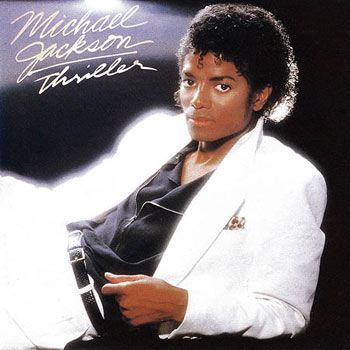
Michael proved the doubters wrong when 'Thriller' was released in November 1982. 'Thriller' was much darker than its predecessor, at times focusing on themes such as the supernatural and paranoia. As well as the title track it spawned hits like 'Billie Jean' and 'Beat It'; songs that propelled Michael into the global superstar he is today. It's officially the best selling album of all time, with the Guiness Book of Records citing in 2007 that it has sold 65million copies.
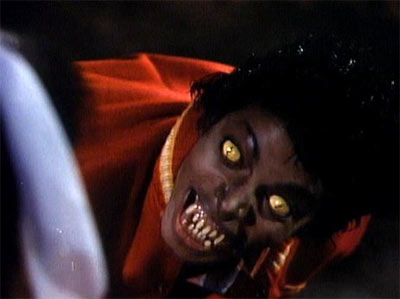
Directed by John Landis, the epic 13-minute video to the single 'Thriller' is not only a landmark in Michael Jackson's career, but in contemporary popular culture as well. A mini-film rather than a straightforward music video, Michael transforms into a horrifying warecat and proceeds to dance in a possessed graveyard with a backing troupe of zombies. MTV were forced to show it twice an hour to meet demand and it has since been voted the greatest music video of all time in a number of polls.
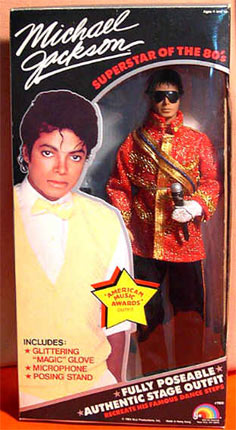
Unlike many other music stars of the eighties, Michael Jackson had a sound business mind, so as part of his deal with Epic he would earn higher royalties from album sales than countless contemporaries. As well as CD and video sales, Michael also had extensive merchandising items such as this doll from 1984. All of this, of course, made him into a multi-multi-millionaire.
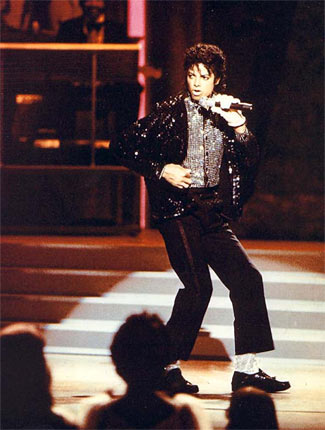
On March 25, 1983 the TV show 'Motown 25: Yesterday, Today, Forever' was filmed for NBC featuring an array of artists from the label including Diana Ross & The Supremes, Stevie Wonder and Marvin Gaye. The Jacksons sang a medley of their greatest hits, while Michael himself performed Billie Jean solo. It was this performance that turned out to be another huge moment in Michael's career, when he showcased the moonwalk for the very first time.
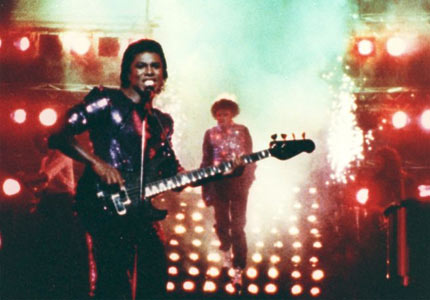
In January 1984, while shooting a lucrative Pepsi commercial in front of thousands of fans in Los Angeles, Michael was hit by a freak accident. His hair (allegedly doused in hair spray) accidentally caught fire from pyrotechnics on stage leaving Michael with second degree burns. PepsiCo settled the ensuing court case with a $1.5million payout to the charity the 'Michael Jackson Burns Center'. Michael himself is thought to have grown self conscious about his image at this time.

Now a meteoric superstar, Michael used his fame to make money for charity. In May 1984, Ronald Regan invited Jackson to the White House to honour him for his work helping alcoholics and drug addicts. In 1985, Michael teamed up with Lionel Ritchie to pen 'We Are The World'. The song featured a host of famous musicians under the name USA for Africa and raised money for those hit by famine in Ethiopia. It has sold over 20million copies to date.
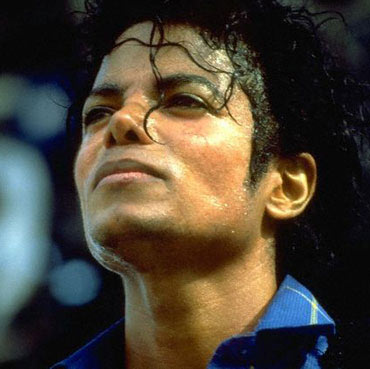
As the 1980s progressed, Michael's skin was overtly turning lighter and his general appearance was a far cry from his youth. Some speculated that he was taking the drastic step of bleaching his skin in a bid to look whiter. Michael had also lost a significant amount of weight to achieve what he called “a dancer's body”. In 1986 Michael had his fourth nose operation and had a cleft put into his chin in a bid to look more masculine.

Continuing his business ventures, Michael bought Northern Songs in 1985 for a speculated $47million – a music company which owned the back catalogue of artists including Elvis and The Beatles. He outbid Paul McCartney in the race to buy the songs, who failed to join forces with John Lennon's widow Yoko Ono for a joint bid. McCartney was unhappy with the acquisition, saying: "I think it's dodgy to do things like that. To be someone's friend and then buy the rug they're standing on".
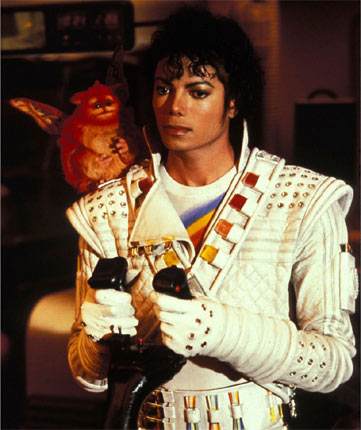
In 1986, Michael has the starring role in the 3D film Captain EO. Directed by Francis Ford Coppola (of Godfather fame) and produced by George Lucas (of Star Wars fame), the effects-laden 17-minute film cost a massive £30million to produce, making it one of the most expensive films of all time (per minute). The futuristic film told the tale of Captain EO and his trip to space to see a wicked alien queen on a hostile planet. His sidekick in the photo above is Fuzzball.
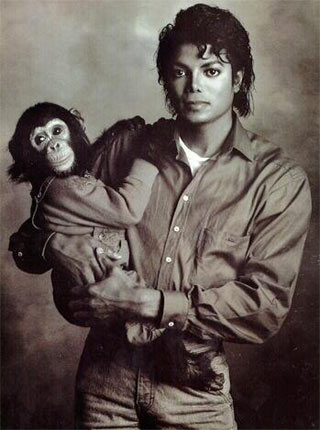
In the mid-eighties, Michael befriended a chimpanzee called Bubbles who had resided at a cancer research clinic in Texas. He brought Bubbles to live with him in California. This public relationship caused a massive media furore, with some mocking the King of Pop for his eccentric ways - he earned his much-loathed moniker 'Wacko Jacko' at this time. Bubbles became a celebrity in his own right, even becoming the subject of a sculpture alongside his owner by the artist Jeff Koons.
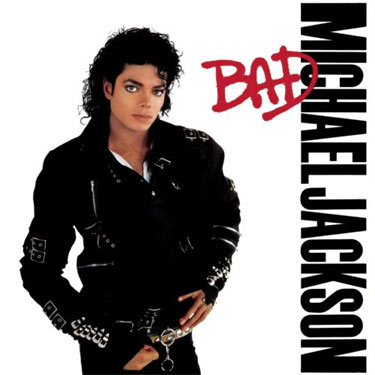
It had been nearly five years since 'Thriller' when Michael's seventh studio album 'Bad' was released in July 1987. Although not quite as popular as its predecessor, it has still shifted 32million copies globally and is the only record in US billboard chart history to feature five number one singles: 'I Just Can't Stop Loving You', 'Bad', 'The Way You Make Me Feel', 'Man In The Mirror' and 'Dirty Diana'.
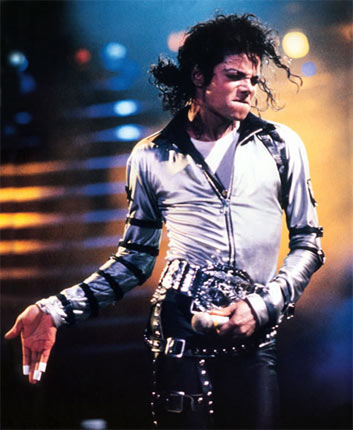
Later that year, Michael set out on the sprawling Bad World Tour. It lasted until early 1989 and broke a string of world records, including a residency feat when 504,000 people saw him over seven sold out nights at London's Wembley Stadium. In all Jackson played 123 concerts to 4.4million people, amassing $125million in profits – much of which was donated to local charities.
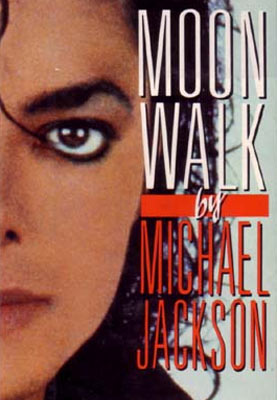
Four years in the making, Michael's candid autobiography 'Moonwalk' was released in 1988. In it, he admitted to having some cosmetic surgery. He also talked of his childhood experiences, astronomical rise to fame and his time with The Jackson 5. He also partially put his change of appearance down to a new hairstyle, puberty, weight loss and a vegetarian diet. This did not deter some from speculating that Jackson had undergone much more drastic surgery, including eye work.
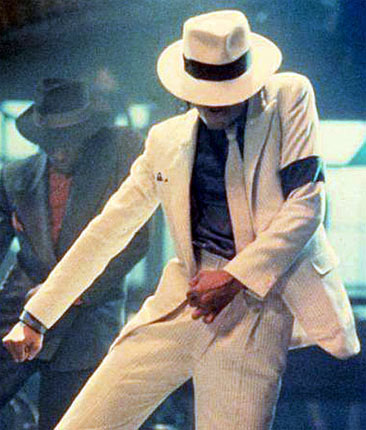
1988 also saw the release of the motion picture 'Moonwalker'. A montage of music videos and short films, it starred Joe Pesci and somewhat bizarrely John Lennon's son Sean and cost $50million to make. Michael's songs naturally sound-tracked the film alongside the score by Bruce Broughton. Augmenting the film and extending Michael Jackson's brand further, arcade and console games were released in conjunction.
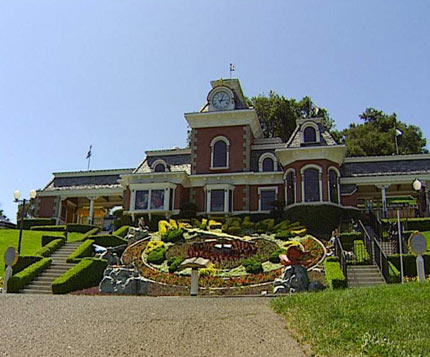
The now mega-rich Michael bought 2,700 acres of land in Santa Ynez, California for $17million in late 1988. He dubbed it the Neverland Ranch and turned it into his own adventure playground complete with a Ferris wheel, other fairground rides, a cinema and an animal park which was all managed by over 40 staff. Following his child abuse court case in 2005, the ranch has recently fallen into disrepair with Jackson unable to pay huge debts.
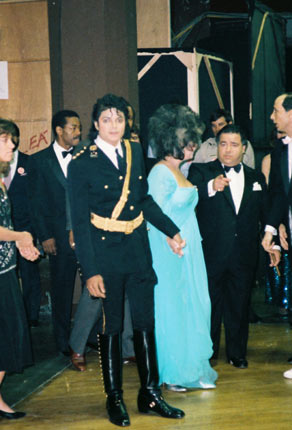
Other than Bubbles, Michael Jackson's other close friend of this period was Elizabeth Taylor. At the MTV Video Awards in 1990, she was bestowed with the honour of handing Jackson the Artist of the Decade award. Introducing him, she said: "(Michael is) the true king of pop, rock and soul". The phrase The King of Pop was used to describe Jackson ever since.
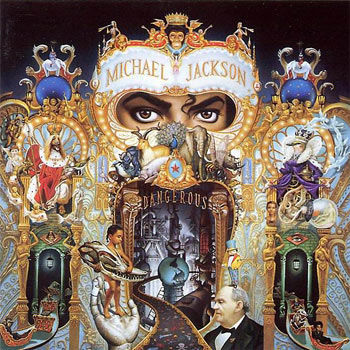
Jackson's eighth studio album 'Dangerous' saw the light of day in November 1991. It was preceded by the mammoth hit single 'Black & White' which promoted racial unity and stayed at the top of the Billboard chart for an impressive seven weeks. So far Dangerous has shifted 27million units globally, seven of which are in the US.
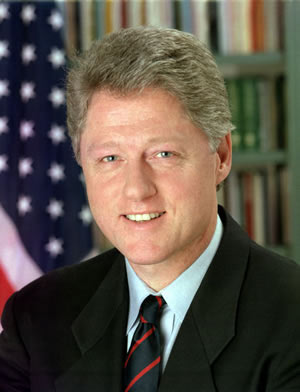
After launching the lucrative Dangerous World Tour in 1992, Michael Jackson once again used his fame to good effect by highlighting the problem of HIV and Aids. There was still much prejudice towards Aids/HIV after they were discovered in the eighties, but following the death of Ryan White – a teenager who contracted Aids from a blood transfusion and was expelled from school – Jackson drew attention to the disease. He called on the Clinton administration to take more action and donate more funds.
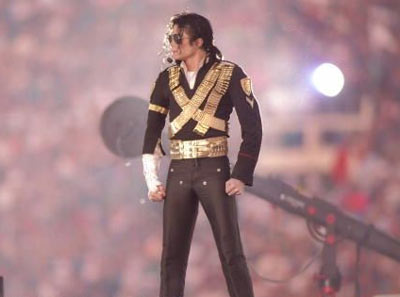
Michael was given the prestigious honour of performing at half time during the Buffalo Bills / Dallas Cowboys superbowl in January 1993. Audience figures for the Super Bowl peaked at half time to 135million viewers in the States and many millions more globally, proving Jackson's enduring appeal. His performance in gold and black military attire was truly unforgettable. Not quite as memorable as his younger sister Janet's infamous nipple slip a decade later.
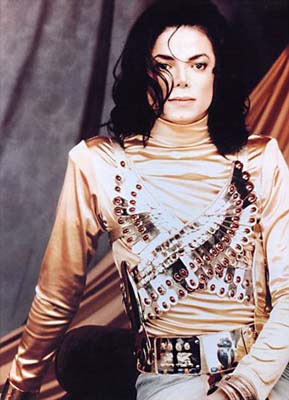
In February 1993, Jackson conducted his first televised interview for 14 years with Oprah Winfrey. In the open chat, he talked of his abuse at the the hands of his father and denied tabloid stories that he had bought the Elephant Man's bones and he slept in an oxygen tank. Importantly, the increasingly pale skinned Michael denied that he ever bleached his skin, instead revealing that he was diagnosed with the chronic skin disease vitiligo which causes loss of pigment.
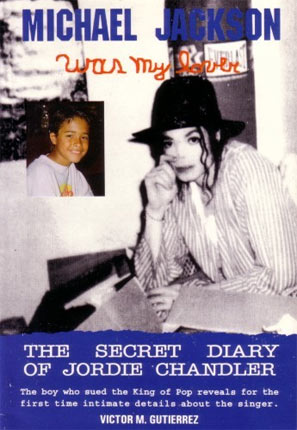
In 1993, 13-year-old Jordie Chandler and his father Evan accused Michael of child sex abuse. The resulting police investigation included a strip search of his Neverland Ranch which left Jackson humiliated. He made a public statement strongly proclaiming his innocence. He had also lost a lot of weight due to stress and an addiction to prescription drugs. Michael settled a civil lawsuit with the Chandlers by paying $22million; the family then dropped their criminal case too. Police have written the case off citing lack of evidence.
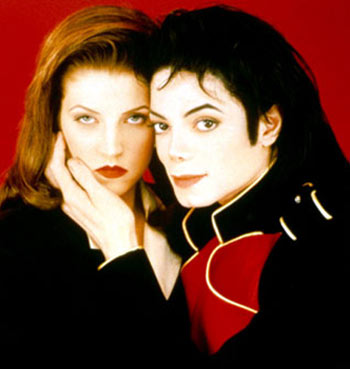
In early 1993 Michael started seeing Elvis' daughter Lisa Marie Presley. During that time she was Michael's rock, providing him with emotional support during the child sex abuse storm. In an interview with Jackson biographer John Randall Taraborrelli she said: "I believed he didn't do anything wrong and that he was wrongly accused and yes I started falling for him. I wanted to save him. I felt that I could do it." They married privately in the Dominican Republic in 1994. They divorced two years later.
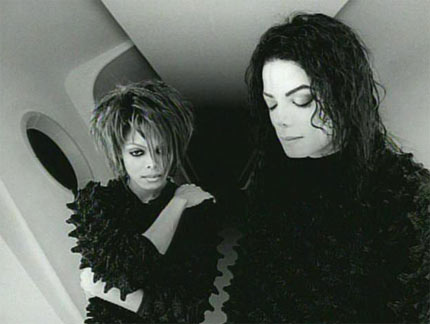
Michael's new single, 'Scream', a duet with his sister Janet, exploded into the charts in May 1995. The abrasive track dealt with subjects such as the negative media attention they both received and their abusive father. However, it's the video that's perhaps the most memorable. The two-toned, futuristic sci-fi promo was directed by Mark Romanek and cost a massive $7million to make.
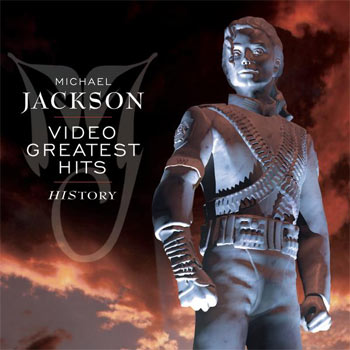
Michael Jackson's double album 'HIStory' was released in June 1995. The 15 track first disc was essentially a greatest compilation, while the second disc collated new songs (including the lead track 'Scream', 'You Are Not Alone', 'They Don't Care About Us' and 'Earth Song') with cover versions and songs lifted from movie soundtracks. It has achieved worldwide sales of 18 million copies and is the biggest selling double album of all time.
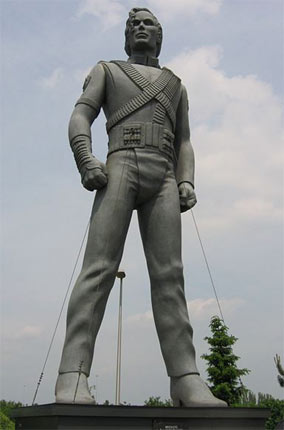
To save Michael from travelling on promotional duties, a string of massive replicas of the statue on HIStory's front sleeve were made and dispatched around the globe. In a genius PR stunt, the London model was placed on a boat and sailed down the River Thames.
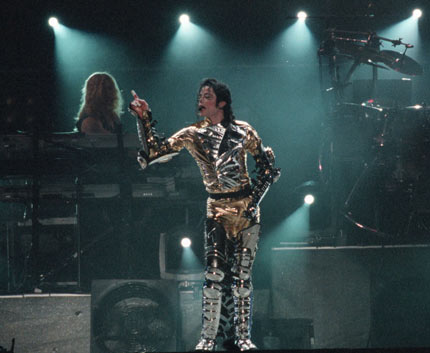
The HIStory World Tour started in September 1996 and wound up in October 1997. This proved to be his last world tour. Over the 82 concerts in 58 cities in 35 countries in five continents, the tour amassed vast profits. The above shot was taken during the tour's final week in Cape T own, South Africa.
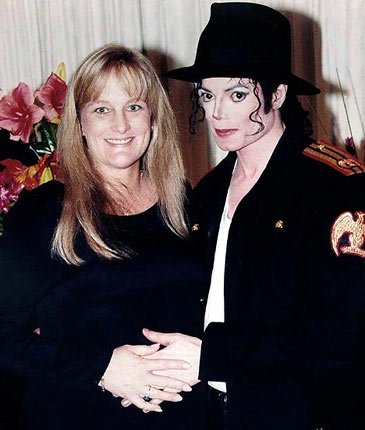
While in Australia on tour, Michael married his former dermatologist's nurse Debbie Rowe. Michael and Rowe had known each other for over a decade meeting when she helped treat his vitiligo. They formed a close friendship during those years and even got intimate romantically. When married, the couple had two children together – a son Michael Joseph Jackson, Jr (Prince) and a daughter Paris Michael Katherine Jackson - before divorcing in 1999.

'Blood on the Dance Floor: HIStory in the Mix' was released in May 1997. It featured eight remixes of songs that originally appeared on HIStory including a Wyclef Jean retake of '2 Bad'. The Fugees man still claims that he's owed money from Michael for his remix work. There were also five new songs on the record; 'Ghosts', 'Morphine', 'Superfly Sister', 'Is It Scary' and the title track 'Blood on the Dance Floor'. The latter track reached number one in the UK.
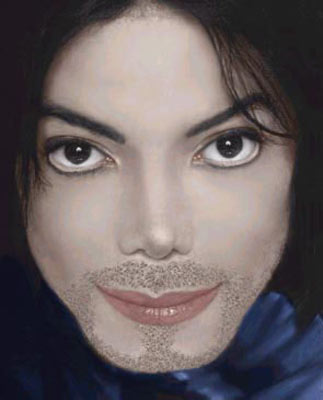
At the turn of the millennium, Jackson got into a dispute with Sony after he discovered he wasn't going to get ownership of the masters of his albums as he had once thought. He also found out that his lawyer had been working on behalf of Sony; a conflict of interests. Jackson decided to ditch the imprint ahead of the release of his new studio album 'Invincible', leaving on a sour note after exchanging harsh words and allegations with the head of Sony Entertainment Tony Mottola.
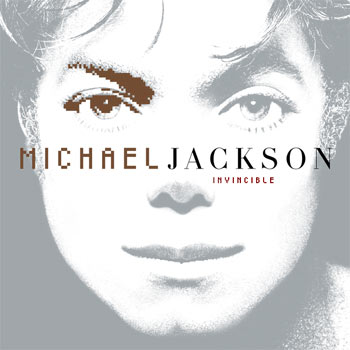
Due to the bitter fall-out with Sony, millions of dollars that were due to be spent on promoting 'Invincible' were not used and all singles and videos were pulled. As a result, Jackson claimed that Mottola did not support African-American artists – allegations that were strongly denied. Naturally, the album did not perform very well, only shifting 8million copies globally to date. It featured contributions from Carlos Santana, Kenneth 'Babyface' Edmonds and a posthumous rap from Notorious BIG.
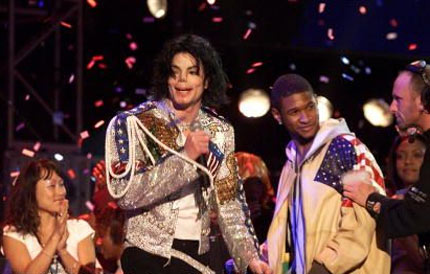
In the wake of the September 11 terrorist attacks, Jackson helped organise the 'United We Stand: What More Can I Give' concert on October 12, 2001 at the RFK Stadium in Washington DC. The day long event featured performances from Rod Stewart, James Brown, P Diddy, Aerosmith, N Sync and Michael's sister Janet. Michael himself came on for the finale song, his charity single 'What More Can I Give', where he was joined by a host of other artists who appeared earlier in the day.

In 2002, a computer boffin knocked up an image of what Michael Jackson would look like if he hadn't had any plastic surgery or was affected by the skin disease vitiligo. We reckon Michael looks a bit like the British athlete from the 1990's Chris Akabusi.
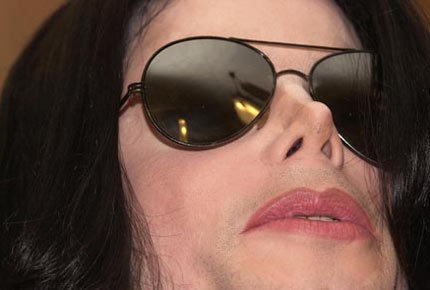
A close up of Michael Jackson's face in 2002, showing the extent to which it has changed over the decades due to surgery and the ravages of vitiligo.
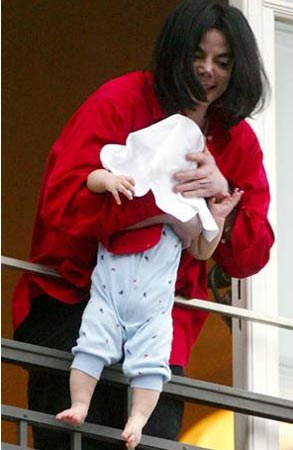
Michael fathered a third child in 2002 who he named Prince Michael Jackson II and nicknamed Blanket. He has never revealed the child's mother, although she's thought to be surrogate. While in Germany in November 2002 Michael came out of his hotel room to greet fans and the media camped outside clutching his new baby. He dangled it precariously from the balcony of the multi story building causing outrage and a media storm.
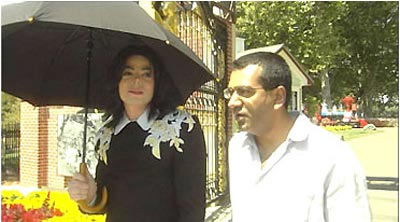
After consulting his close friend Uri Geller, Michael Jackson agreed to take part in a British TV documentary in late 2002/early 2003. Called Living With Michael Jackson, journalist Martin Bashir lived with the star for eight months, befriending him and gaining an insight to his life at the Neverland Ranch. Jackson felt betrayed by the resulting show, saying that it was biased and purposefully set out to portray him in a bad light. Bashir questioned Jackson's relationship with children, parenting and his eccentric spending habits.

Later that year, Michael was arrested by police and charged with seven counts of child molestation and administering an intoxicating agent to carry out the crime. The then 14-year-old Gavin Arivizo made the damning allegations against him. He had earlier appeared in the Martin Bashir documentary and was seen to be very affectionate towards Michael and had taken part in sleepovers with other children at the Neverland Ranch. Michael always denied that these sleepovers were in any way sexual.

The People v Michael Jackson trial started in Santa Maria, California in January 2005. The gruelling trial lasted five months and Michael's physical and mental health suffered dramatically as a consequence. On June 13, 2005 at the Superior State Court, Michael was found not guilty on all the counts against him. His faithful fans who had camped outside the court for the duration of the case cheered in jubilation at the result. Michael then decamped to Bahrain to escape the media.
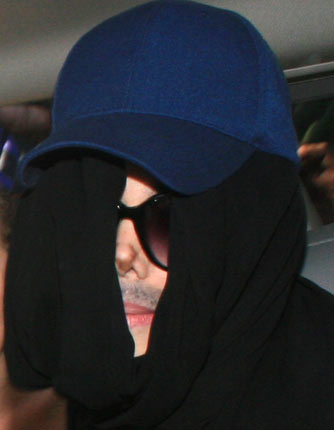
Since the trial, Michael has been hit by debt problems and had his Neverland Ranch impounded. In better news, he came to London in 2006 to be honoured for eight achievements at the Guiness World Records offices and later that year he agreed to share custody of his children with Debbie Rowe. In 2007 he bought Famous Music for a reported $370million which has rights to artists' songs including Eminem. As the above picture shows, he has grown increasingly shy and does all he can to escape the media glare.

A 25th anniversary version of Thriller was released in February 2008. As well as a remastered version of original record, it featured a batch of remixes and tracks re-recorded with guest vocalists. Those that guested include Kanye West, Akon and will.i.am. To celebrate Jackson;'s 50th birthday, a double-disc compilation album called 'King of Pop' was released on August 22. The fans themselves voted for the track-listing. Michael Jackson died on June 25 2009. He was 50.




